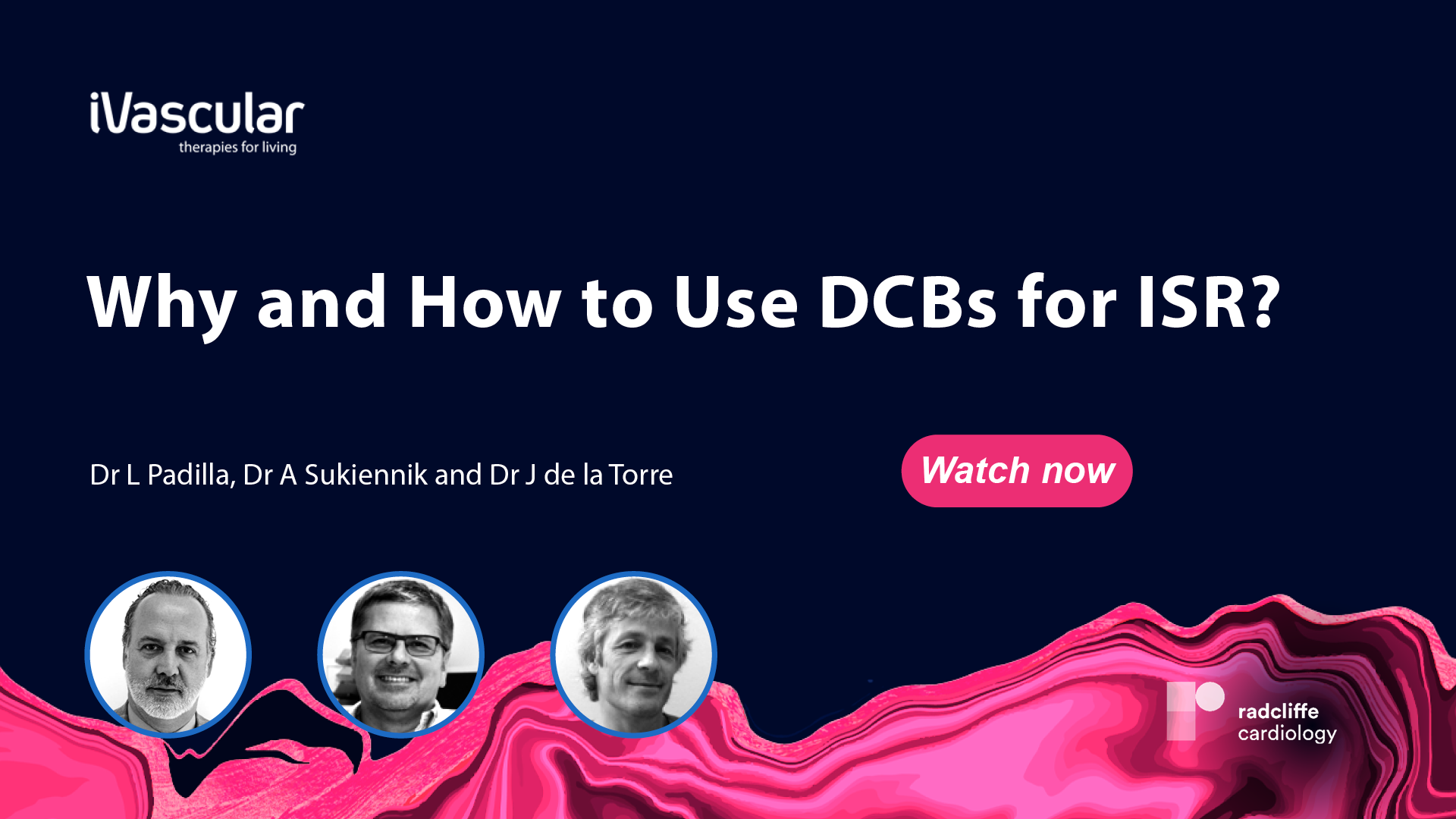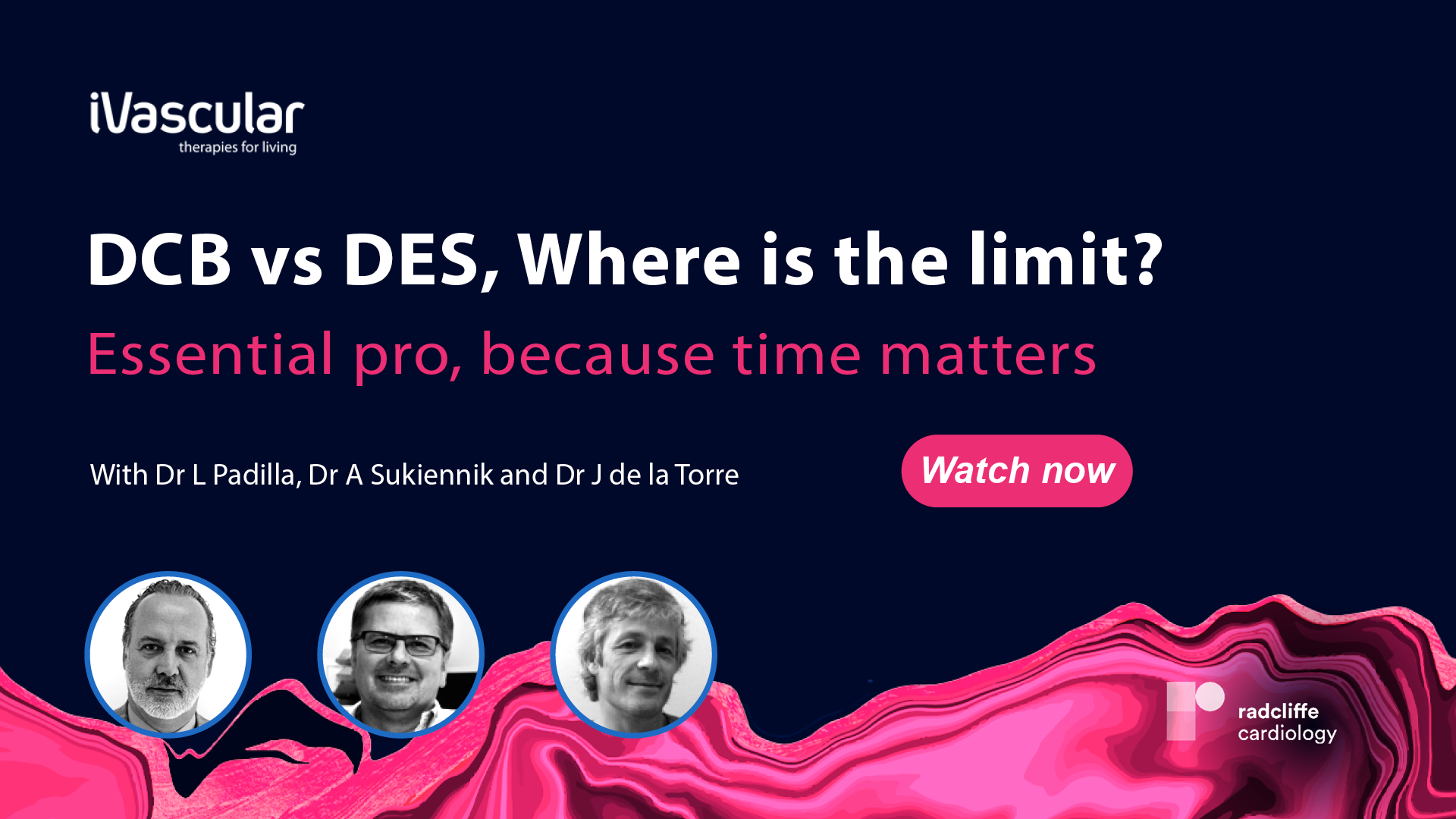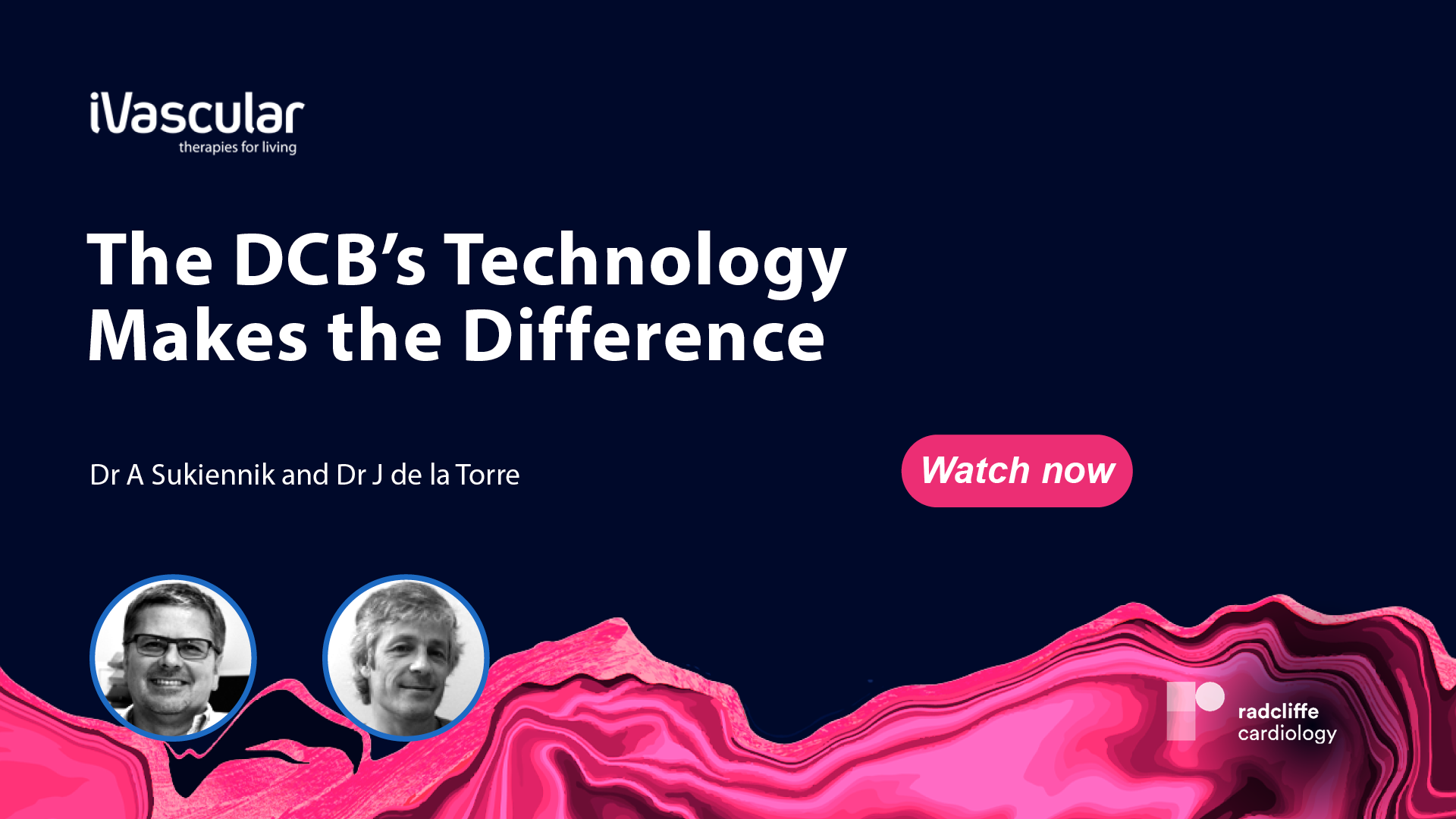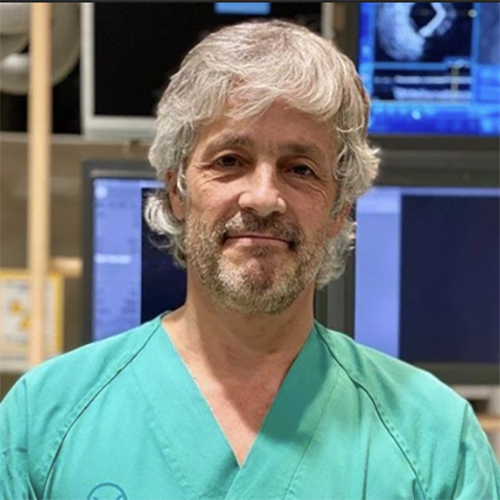DCB vs DES, Where is the Limit?
Published: 13 February 2023
-
Views:
 2797
2797
-
Likes:
 7
7
-
Views:
 2797
2797
-
Likes:
 7
7
-
 Up Next
Up Next -
 4m 31sPart 3 | Session 2 Why and How to Use DCBs for ISR? (Presentation Only)
4m 31sPart 3 | Session 2 Why and How to Use DCBs for ISR? (Presentation Only)
-
 6m 37sPart 6 The Advantages of a DCB
6m 37sPart 6 The Advantages of a DCB
-
 1h 13m 25sPart 1 DCB vs DES, Where is the limit? Full Length Video José M de la Torre Hernández, Lucio Padilla, Adam Sukiennik
1h 13m 25sPart 1 DCB vs DES, Where is the limit? Full Length Video José M de la Torre Hernández, Lucio Padilla, Adam Sukiennik
-
 6m 58sPart 2 The DCB’s Technology Makes the Difference José M de la Torre Hernández, Adam Sukiennik
6m 58sPart 2 The DCB’s Technology Makes the Difference José M de la Torre Hernández, Adam Sukiennik
Overview
Drug-coated balloon (DCB) technology permits effective delivery of a drug to a lesion in the arterial wall, but not all DCBs are the same. The Essential pro DCB from iVascular has premium deliverability and last generation nanotechnology TransferTech, proving its reliability.
In this series of insightful presentations and discussions, moderator Prof Jose M de la Torre (Cantabria, ES) is joined by Dr Lucio Padilla (Buenos Aires, AR) and Dr Adam Sukiennik (Toruń, PL) to discuss the application and effectiveness of drug-coated balloons vs drug-eluting stents. They highlight the key benefits given by Essential pro and present several clinical cases where its efficacy has been demonstrated.
The faculty explore unique components of DCB technology and mechanism of action, explaining in detail the key differentiation between Essential pro and other DCBs, in addition to providing insight into Essential pro application in challenging cases, including bifurcations.

Learning Objectives
- When to use a DCB
- What is important when using a DCB
- Benefits of using Essential pro
Target Audience
- Interventional Cardiologists
More from this programme
Part 1
DCB vs DES, Where is the limit? Full Length Video
Part 2
The DCB’s Technology Makes the Difference
Part 3
Why and How to Use DCBs for ISR?
Part 4
DCBs for Provisional Stenting in Bifurcations
Part 5
Benefits of DCBs for HBR Patients
| 1 session | |
| Benefits of DCBs for HBR Patients | Watch now |
Part 6
The Advantages of a DCB
| 1 session | |
| The Advantages of a DCB | Watch now |
About the episode
Prof Jose M de la Torre (Cantabria, ES), Dr Lucio Padilla (Buenos Aires, AR) and Dr Adam Sukiennik (Toruń, PL) offer insights into the pivotal role of DCBs in treating in-stent restenosis (ISR), they cover procedural aspects, advantages and cases showing the good performance of Essential pro.
Faculty Biographies

José M de la Torre Hernández
Head of Hemodynamics and Interventional Cardiology
Prof Jose M de la Torre is an interventional cardiologist and Head of the Hemodynamics and Interventional Department of the Marques de Valdecilla University of Santander, ES.
Prof Jose M de la Torre is member of the scientific committee of the Spanish Society of Cardiology and is fellow of the European Society of Cardiology. Former associate director of the Trans Catheter Therapeutics Meeting in US. Faculty of ESC, PCR, ACC and TCT meetings. Coordinator of the ESTROFA, XIMA and LITRO study groups.

Lucio Padilla
Interventional Cardiologist
Dr Lucio Padilla is an Interventional Cardiologist at Instituto Cardiovascular de Buenos Aires, AR .
He graduated from the University of Buenos Aires (UBA) with honors degrees and trained in clinical and Interventional cardiology at the Instituto Cardiovascular de Buenos Aires, Argentina (ICBA). Later he trained on complex PCI at the Gregorio Marañon General University Hospital, Madrid, Spain.
He currently develops as Deputy Chief at the ICBA and the Sanatorio Anchorena, Buenos Aires.
He is currently dedicated to diagnosis and treatment of Complex Coronary Heart Disease (CTO/Bifurcation/calcification/FFR/IVUS Rotablator/IVL).
Presently he is the principal investigator of the Latin American Registry of Coronary Bifurcations PCI (LatamBif Registry) and Director of the programme in complex PCI/CTO and also leader of the Latin American Registry of CTO PCI (Latam CTO Registry).

Adam Sukiennik
Cardiologist
Dr Adam Sukiennik is a Cardiologist at University Hospital nº1 in Bydgoszcz, CM UMK in Torun, PL. He has been a lecturer since 2007.
Dr Sukiennik graduated from the Medical University of Gdansk, where he also carried on his education to get a PHD.
He was II and III Phase Study coordinator and investigator in STEMI, ACS, DES, BMS bifurcation, DEB and BRS trials. He is a member of European Cardiac Society, European Association of Percutaneous Cardiovascular Interventions, Polish Cardiac Society and Association of CardioVascular Interventions.








Comments